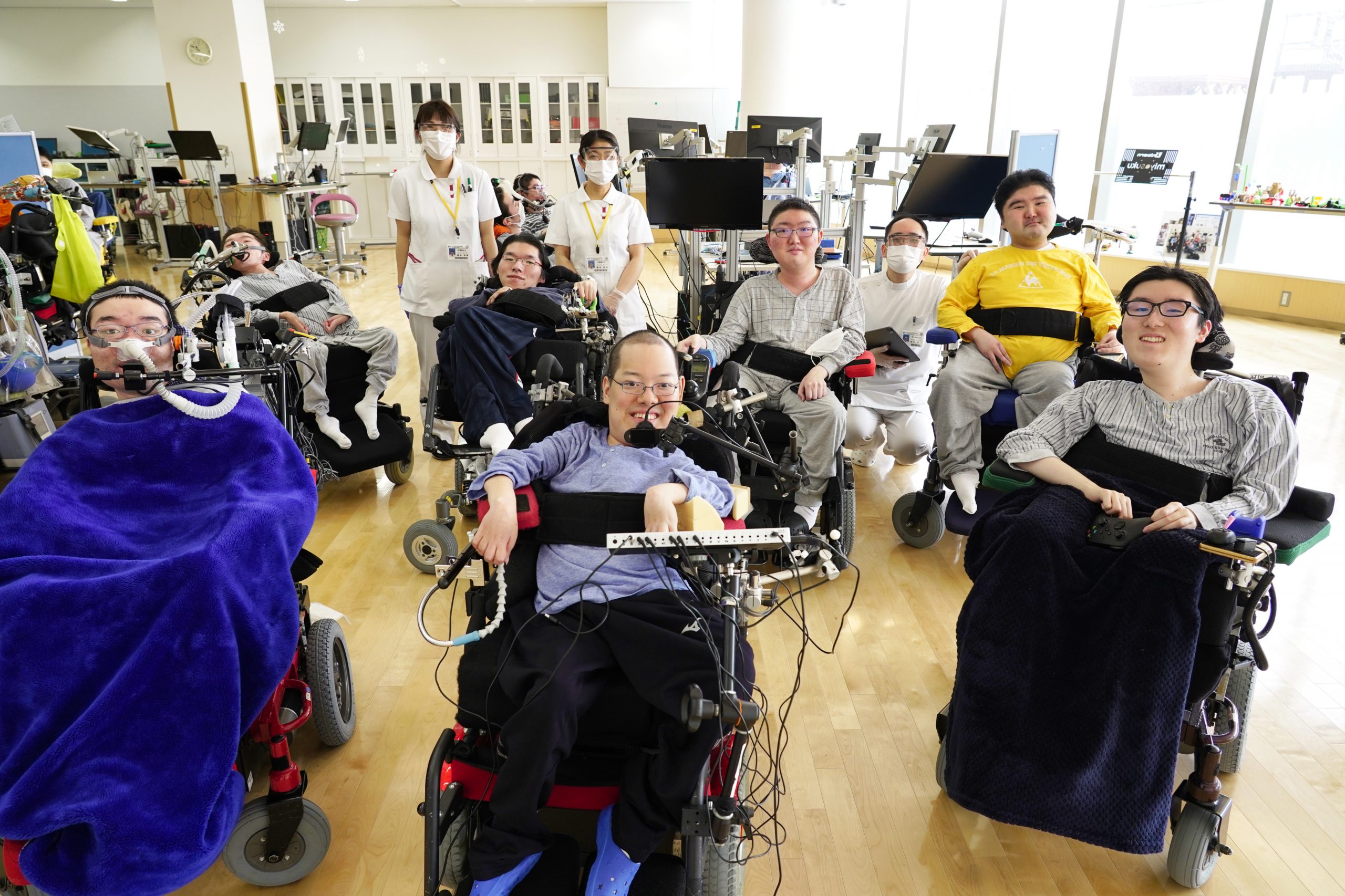Equipped with the right gear, gamers with disabilities are making new connections across the world
Kentaro Yoshinari is a super-competitive gamer who is ready to take on all comers from anywhere. He also has spinal muscular atrophy.
“People with disabilities can’t always play regular sports,” Yoshinari says. “But they can play computer games under the same conditions as everyone else.”
He is one of dozens of patients at the Hokkaido Medical Center in Japan’s far north, where gaming has become a regular part of treatment and rehabilitation regimes.
Occupational therapist Eiichi Tanaka works with people with a range of disabilities at the hospital. Like Yoshinari, he is also a keen gamer.
“We currently have about 100 patients in our neuromuscular rehabilitation center who have been hospitalized for a long time,” Tanaka says. “And 70 to 80% of them play computer games using smartphones, PCs and consoles.
“Games not only aid physical rehabilitation, they also serve as a catalyst for communication among the patients themselves and through the internet, between patients and the outside world.”
He has been encouraging people with disabilities to game since 1998. But console controllers used to be designed only for players who could use fingers on both hands to move characters, attack enemies, talk and so on.
Tanaka and his colleagues would modify controllers with accessories to meet the needs and abilities of individual patients. But customizing controllers this way wasn’t easy or cheap.
That changed in 2018 with the debut of the Xbox Adaptive Controller.
“I was astounded,” he said. “We had been begging game companies for years to develop controllers for people with disabilities. Then all of a sudden, the kind of device we’d been wanting for so long was rolled out.”
The Xbox Adaptive Controller has a large panel designed for easy operation by people with disabilities, as well as multiple ports for connection of additional buttons and other accessories. It exemplifies inclusive design principles like “recognize exclusion,” “learn from diversity” and “solve for one, extend to many.”
“If we design for people who have a unique need, it benefits people universally,” explains Bryce Johnson, a senior inclusivity designer on Microsoft’s Xbox team.
The staff and patients at the Hokkaido Medical Center were so impressed by the controller that they made a video about its impact.
“We wanted to show people how Xbox Adaptive Controller can be used to play games from the perspective of people with disabilities,” Tanaka says.
Because of COVID-19, people involved in the use Xbox Adaptive Controller in Tokyo were unable to visit the center to help with the video’s production. Instead, Microsoft Teams was used to connect staff in Hokkaido and Tokyo to develop the story and confirm production details. They wanted the video to be useful to people throughout the world, so production staff also used Microsoft Translator and other tools to create English subtitles.
The video introduces the many features of the Xbox Adaptive Controller and shows how people with limited mobility can use them, particularly by understanding how their bodies move and how those movements can be used to play games.
”I think that there are still many people who don’t know this,” says Yoshinari who led the video production.
“I want to make people with disabilities, like me, be aware that there are sports that they too can enjoy. Hopefully, this video will also help people without disabilities to understand that even people with disabilities can play computer games just like everyone else.
“We can now connect with people all over the country from here in Hokkaido. More and more patients who had never used Xbox to play games before are using Xbox Adaptive Controller these days to try their hand at new games.
“I’m looking forward to connecting with more and more people – not only throughout Japan but all over the world through playing games with them.”
The story was first published on Microsoft Stories Asia.





